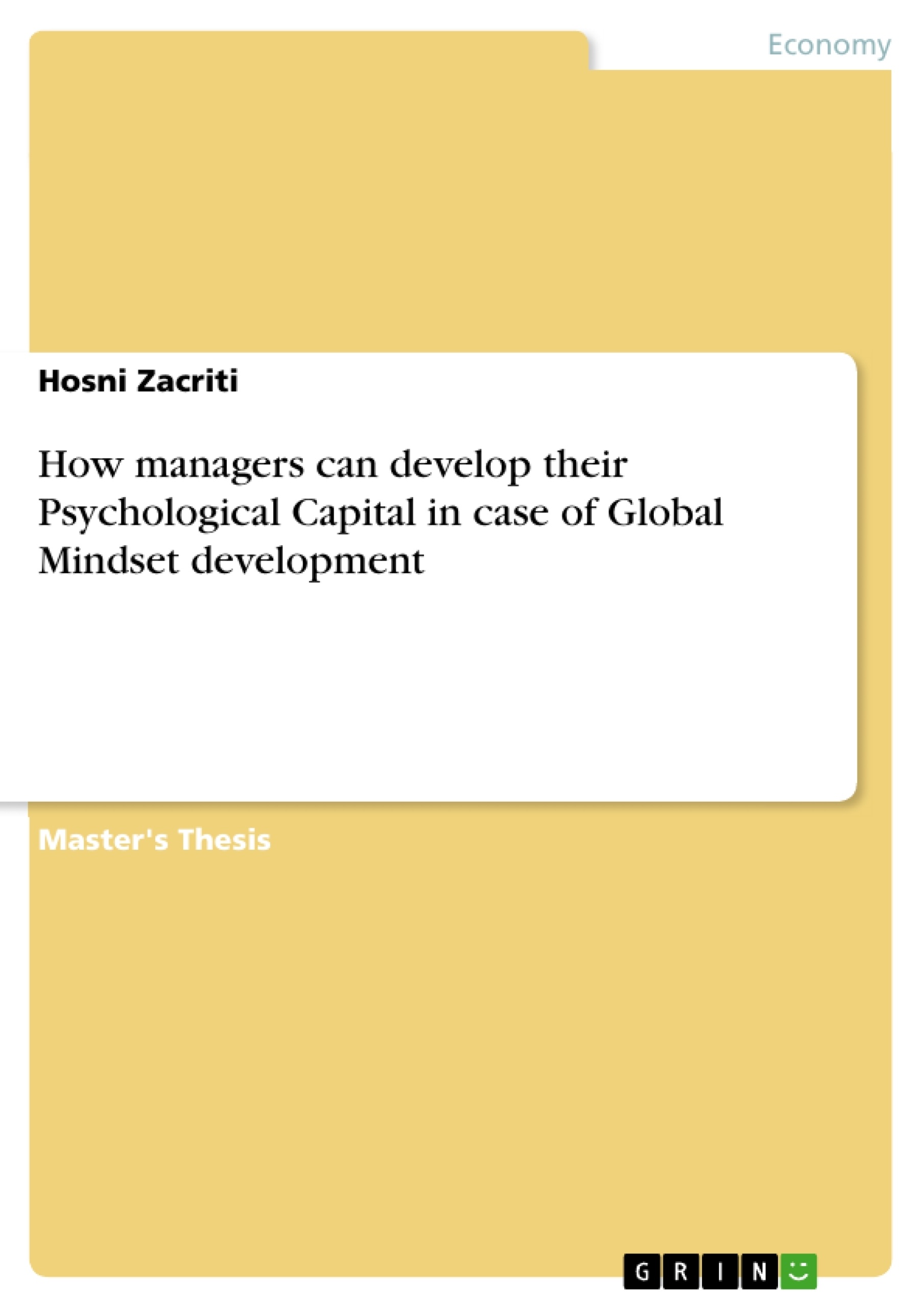The purpose of this thesis is to develop suitable training measures for the area of Global Mindset development in the field of psychological capital by eliciting the experiences of German managers. Fundamentally, the analysis is based on the individual level of Global Mindset. The new theoretical lens from psychological capital is employed to gain new insights into further development of a global mindset through a qualitative research approach.
The qualitative approach is implemented through in-depth interviews of 10 German managers with several years of management experience from major established companies.
The results are that the training of Psycap has to be on the emotional level. Also the generation of the people has an influence on the training. Another important and new finding is that the self-reflection and individualizing of an individual promotes the sustainability process of psychological capital.
Inhaltsverzeichnis (Table of Contents)
- Acknowledgements
- Abstract
- Table of contents.
- List of Figures.
- List of Tables.
- Introduction....
- Problem Statement
- Aim and purpose of this Work..
- Chapter Outline.......
- Literature Review
- Overview.
- Trade change with advancing Globalization.…......
- Internationalization of companies.......
- Definition of Global Mindset
- Global Mindset and internationalization
- Global Mindset Capitals
- Global Intellectual Capital..
- Global Psychological Capital
- Global Social Capital.
- Psychological capital....
- Psychological capital structure
- Psychological capital development.......
- Training methods of psychological capital
- Limitations of literature research
- Findings of Literature research
- Methodology.
- Overview
- Research Onion.......
- Quantitative vs. qualitative Research Methods.
- Qualitative research
- Expert interviews
- Transcription
- Interviews Questions..
- Grounded Theory..
- Qualitative Data Analysis
- Coding………….
- Open Coding.
- Axial Coding.
- Selective Coding......
- Theoretical saturation ......
- Data analysis using computer supported systems
- Reflection .........
- Findings..
- Chapter Overview
- Description of the Data Analysis process...
- RQ1 Which factors of the psychological capital are important for German managers to increase their Global Mindset?
- RQ2 Does the age of a leader play a role in the development of psychological capital of Global Mindset?.
- RQ3 What are appropriate training measures for the promotion of psychological capital within the framework of a Global Mindset training for managers? ......
- RQ4 Is the development of PsyCap sustained?..\li>
- Discussion and findings ..
- RQ1: Which factors of the psychological capital are important for German managers to increase their Global Mindset?.
Zielsetzung und Themenschwerpunkte (Objectives and Key Themes)
This dissertation explores the development of suitable training measures for Global Mindset development in German managers. It specifically focuses on the individual level of Global Mindset and employs the theoretical lens of psychological capital. The research utilizes a qualitative approach through in-depth interviews with German managers to gain insights into the development and sustainability of Global Mindset. Key themes include:- The role of psychological capital in developing Global Mindset.
- The impact of age and experience on the training process.
- The importance of emotional and self-reflective training methods.
- The sustainability of psychological capital development in promoting Global Mindset.
- The effectiveness of training measures in fostering Global Mindset.
Zusammenfassung der Kapitel (Chapter Summaries)
The dissertation is structured into several chapters, each exploring a specific aspect of the research. The introduction establishes the problem statement, highlighting the increasing need for managers to develop a Global Mindset in today's globalized business environment. The introduction also defines the aim and purpose of the work, which is to investigate suitable training measures for developing Global Mindset, focusing on the individual level and employing the theoretical lens of psychological capital. The literature review examines the concept of Global Mindset and its importance in internationalization, exploring the different capitals that contribute to a Global Mindset, specifically focusing on psychological capital and its structure and development. The chapter also investigates existing training methods for psychological capital and analyzes the limitations of the literature research. The methodology chapter outlines the research design, including the qualitative research approach, the expert interview method, and the grounded theory data analysis process. The chapter also discusses the use of computer-supported systems for data analysis. The findings chapter presents the key results of the data analysis. The analysis addresses research questions concerning the important factors of psychological capital for developing Global Mindset, the influence of age on the development of psychological capital, appropriate training measures for promoting psychological capital, and the sustainability of psychological capital development.Schlüsselwörter (Keywords)
The dissertation focuses on the development of Global Mindset in managers, specifically exploring the role of psychological capital in this development. Key terms and concepts include: Global Mindset, Leadership Development, Psychological Capital, Individual Global Mindset, Cross-Cultural Training, Management Learning tools.- Citar trabajo
- Hosni Zacriti (Autor), 2017, How managers can develop their Psychological Capital in case of Global Mindset development, Múnich, GRIN Verlag, https://www.grin.com/document/383546



